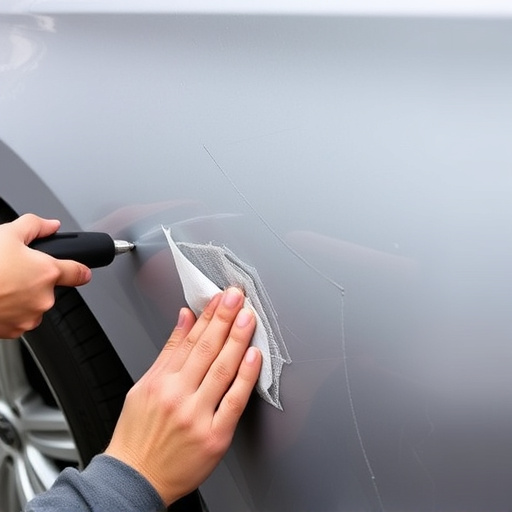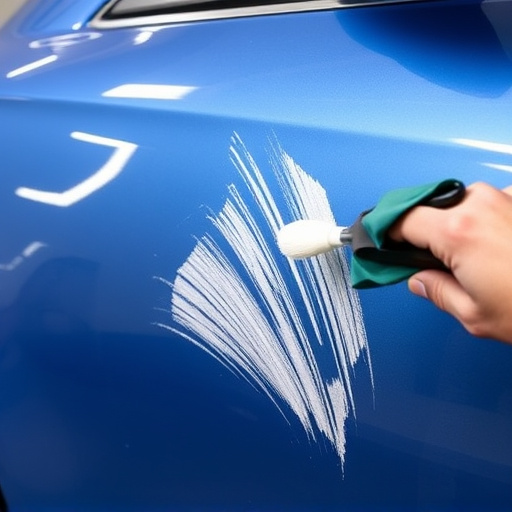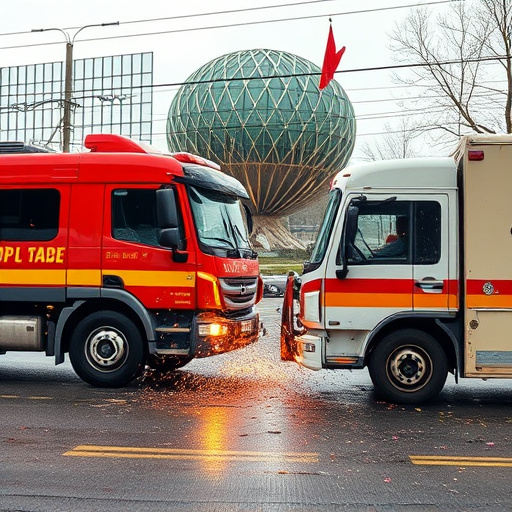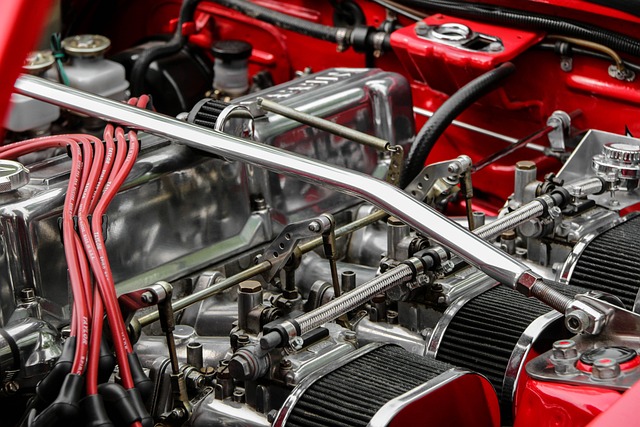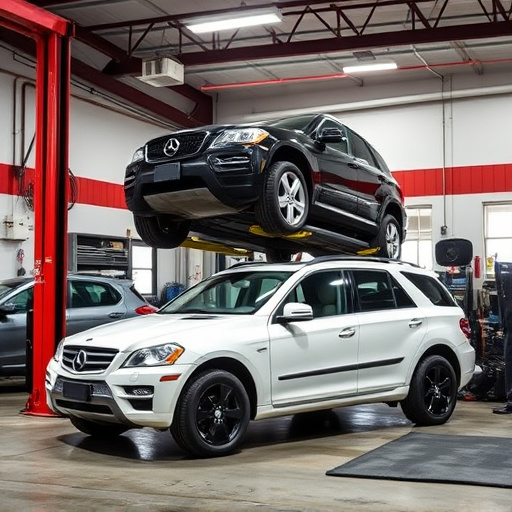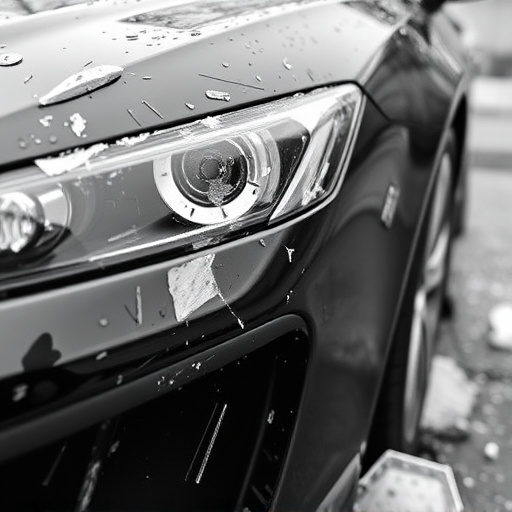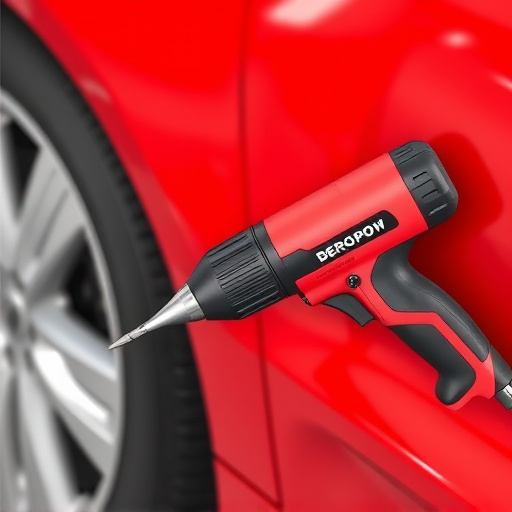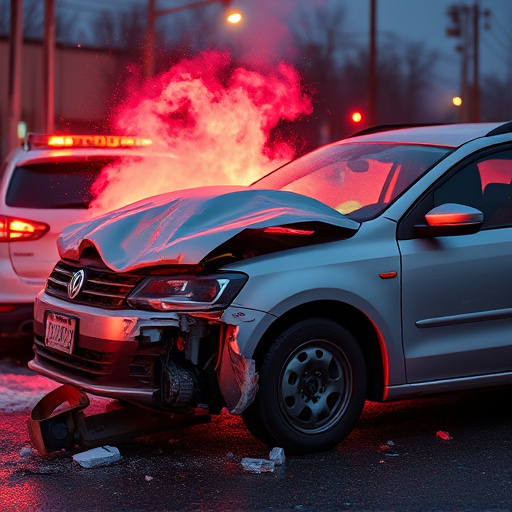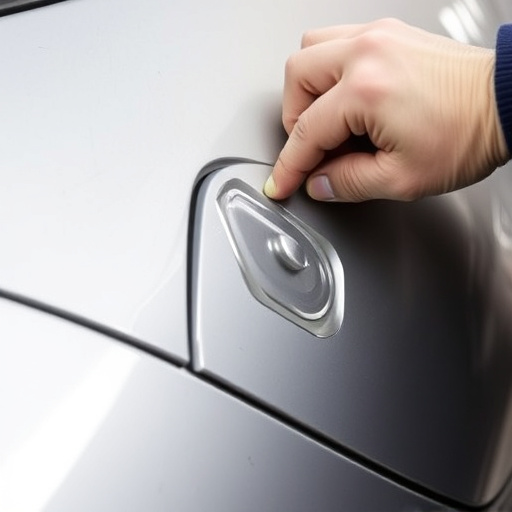Mastering Tesla PPF (paint protection film) repair involves meticulous damage assessment, careful lifting of damaged film, precise preparation and application of new PPF, and controlled curing. Optimal temperature control between 65-75°F (18-24°C) ensures proper adhesion, even curing, and a factory-like finish, preventing defects like bubbles or wrinkles. Specialized equipment in high-quality collision repair shops is key for achieving these conditions.
Tesla vehicles are renowned for their sleek design, but like any car, they require care, especially when it comes to protecting the paintwork. This article delves into the intricacies of Tesla PPF (paint protection film) repair, highlighting why temperature control is paramount. We explore the processes involved, uncover the science behind optimal healing and adhesion, and provide essential guidelines for successful restoration, ensuring your Tesla’s exterior stays as vibrant and protected as ever.
- Understanding Tesla PPF Repair Processes
- Role of Temperature in PPF Healing and Adhesion
- Optimal Conditions for Successful PPF Restoration
Understanding Tesla PPF Repair Processes
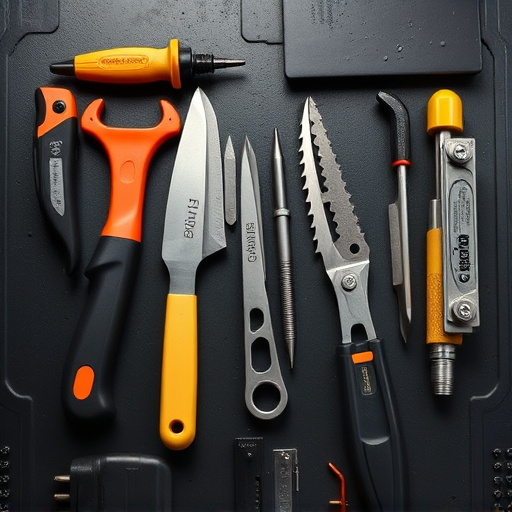
Understanding Tesla PPF (paint protection film) repair processes is key to ensuring optimal car bodywork preservation. Unlike conventional collision damage repair, PPF fixing involves specialized techniques and materials due to the unique nature of the protective film. The first step in any Tesla PPF repair is carefully examining the damaged area to determine the extent of the issue. This includes identifying cracks, chips, or bubbles that may have formed under the film.
Once the damage is assessed, the repair process begins with meticulous temperature control. Since PPFs are sensitive to heat, a precise and controlled environment is crucial for successful restoration. Technicians use specialized tools and solutions to carefully lift the film from the damaged area without causing further harm. This involves removing the affected layer of the film, preparing the underlying surface, and applying new PPF material with precision. The final step includes curing the film under controlled conditions to ensure a seamless integration that matches the car’s original finish, enhancing the overall automotive restoration quality.
Role of Temperature in PPF Healing and Adhesion
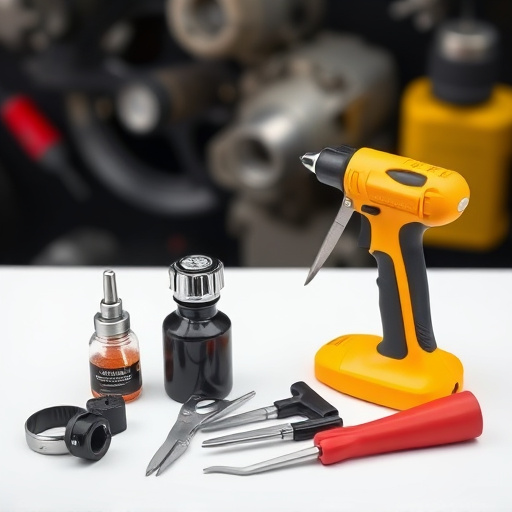
The role of temperature in Tesla PPF (paint protection film) repair cannot be overstated. Optimal healing and adhesion of PPF require a carefully controlled environment, with temperature playing a pivotal part. During the repair process, maintaining consistent temperature levels ensures that the film adheres firmly to the car’s surface, preventing bubbles and wrinkles from forming. This is crucial for achieving a seamless finish that matches the vehicle’s original paint job.
Temperature control also influences the viscosity of the adhesive used in PPF repair. At the right temperature, the adhesive becomes more malleable, facilitating easier application and better penetration into microscopic imperfections. Conversely, incorrect temperature can lead to either excessive stiffness or overly fluid adhesive, both of which negatively impact the final repair quality. Thus, a car body shop specializing in Tesla PPF repair must employ advanced techniques to regulate temperature during the healing process, ensuring top-notch results that preserve the vehicle’s aesthetic appeal and protect its finish from future damage.
Optimal Conditions for Successful PPF Restoration
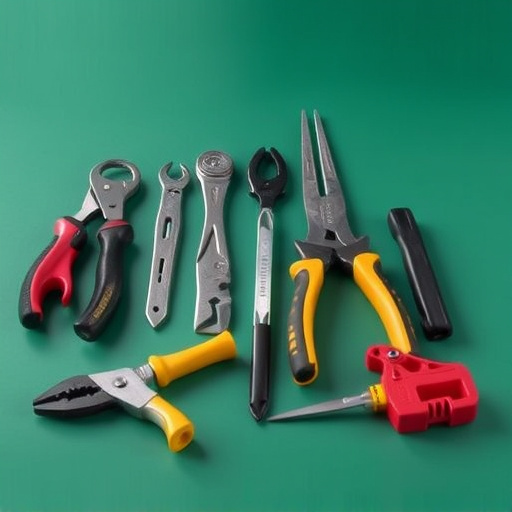
For optimal results when repairing Tesla PPF (paint protection film), temperature control is key. The ideal environment for PPF restoration involves a clean, controlled space with consistent temperatures between 65-75°F (18-24°C). This range ensures that the film adheres properly and cures evenly, minimizing the risk of bubbles, wrinkles, or discoloration.
Maintaining these optimal conditions requires either specialized equipment or access to a high-quality collision repair shop offering automotive paint services. Skilled technicians understand the importance of temperature control, using heated tables or other tools to achieve and maintain the perfect environment for Tesla PPF repair, ensuring long-lasting protection and a factory-like finish.
Tesla PPF (paint protection film) repair is a meticulous process that demands attention to temperature control. As discussed, maintaining optimal conditions during healing and adhesion stages is crucial for successful restoration. By understanding the role of temperature and adhering to recommended guidelines, technicians can ensure superior results in Tesla PPF repairs, preserving the vehicle’s protective layer and aesthetic appeal.

